I’ve been to many interesting places, but nothing compares to my twenty-four hour visit to the USS John C. Stennis, an aircraft carrier. I was a guest of the Navy who operates this program in order to bolster recruiting, retention, and overall awareness of what it does. I hope that you enjoy these pictures and videos. I would be overjoyed if you spotted someone you know in one of them.
Incidentally, this is probably the longest posting in the history of blogging. It contains over 130 photos (I lost count) and five videos. You might question the wisdom of posting this many pictures (here’s one person’s reaction). After all, I could create a slide show so that people who were really interested could click through the pictures. There are three reasons why I didn’t:
First, I can’t figure out Flickr.
Second, I want folks to click and scroll through all the pictures and videos so that they can see how people serve our country.
Third, if one parent, spouse, or child sees a loved one in the picture, it’s enough reason to present the pictures this way. Thousands of people in the armed services are putting their lives at risk, so the least you can do is download five megabytes of images.
If you enjoyed this posting, you’ll probably find Military.alltop. and Defense.alltop interesting too. When I’m not landing on aircraft carriers, I try to help people find the latest and greatest news about many topics–including the military.
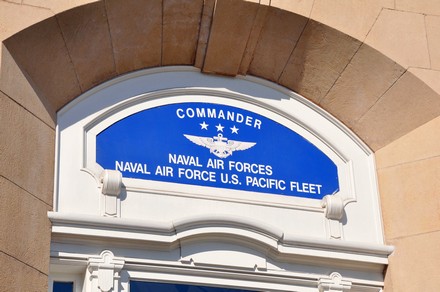
The day started with a briefing in this building on Coronado Island in San Diego, California.
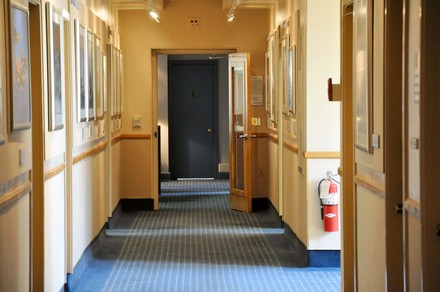
That door at the end of the hall is the commander’s office.

First stop: a briefing about the Navy. This guy had interesting PowerPoint slides, to put it mildly.
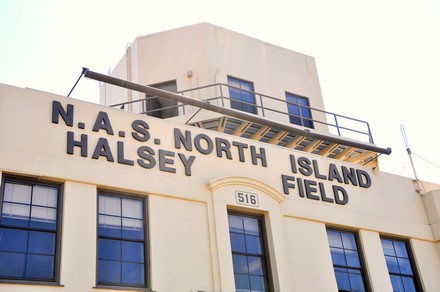
Then it was on to the terminal at the Naval Air Station, North Island.
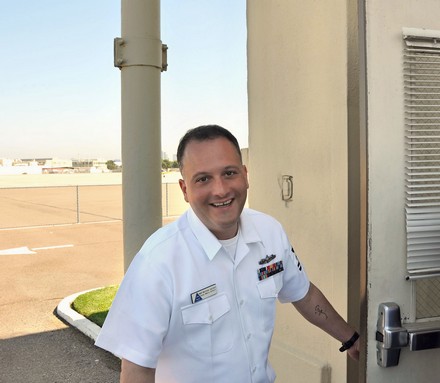
This is the person who took us through the orientation period.
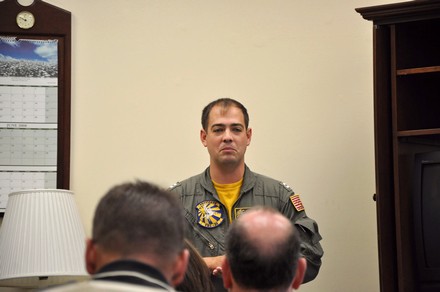
A little pre-flight briefing to scare the shiitake out of you.

Then you suit up.
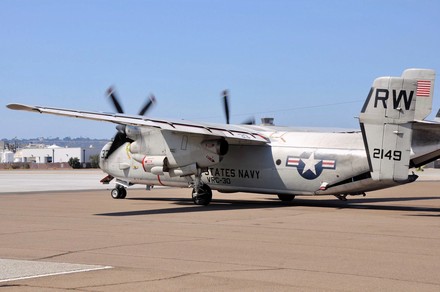
And you get into a C-2, affectionately called a COD (carrier onboard delivery).

This is a video of getting on the COD and getting to the ship. It’s jerky, disorienting, and unsteady because getting to an aircraft carrier by COD is a jerky, disorienting, and unsteady process. I don’t have a video of the moment that we landed because I choked. (Shot with a Flip Mino)
However, this is what a COD landing looks like from the outside.

When you get off the COD, you enter another world. It’s like you’re a caterpillar, and someone drops you in the middle of a beehive–sort of like the movie Bug’s Life. Click here to read a description of the organizational requirements of a carrier (thanks JCD)
The colors depict what type of function the person serves. For example, green shirts hook aircraft to catapults and handle arresting wires; yellow shirts direct the movement of aircraft, red shirts handle weapons and ammunition; and white shirts handle safety related jobs.
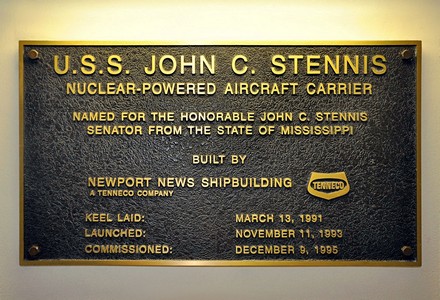
The ship is named after Senator John C. Stennis of Mississippi. He served in the Senate from 1947 to 1988. The length of the flight deck is 1,092 feet; the total area of the flight deck is 4.5 acres. The height from keel to mast is 244 feet. The displacement is 97,000 tons. When the ship is fully loaded for combat, there are approximately 5,000 people on it. Its nuclear reactors can drive it one million miles before they require replacement.
My favorite part of the history of the Stennis is that the ship’s mantra is two words long: “Look ahead.”
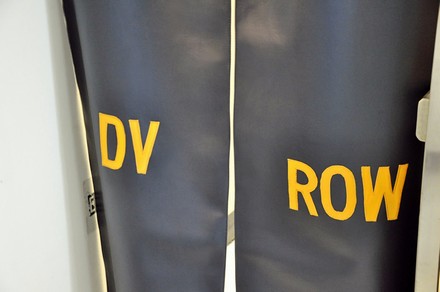
This is the area for “distinguished visitors” area.
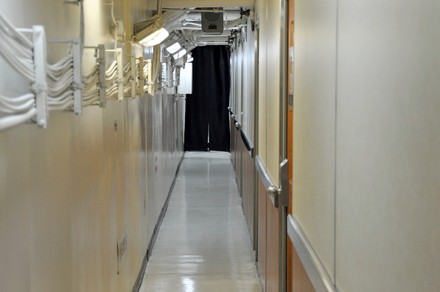

This is a room for two visitors. I once stayed overnight in a World War II submarine, and it wasn’t nearly as nice. (This was after WWII, and I was an American.)
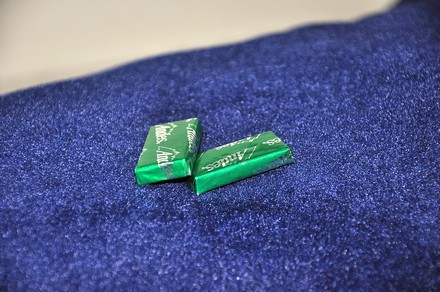
There were even mints on the pillow. That’s the good news. Here’s the bad news: the room is right under the catapults that launch planes. To get an idea of the noise level, turn your speaker on to the highest level and then play this MP3. These launches happened every few minutes until the wee hours of the morning.
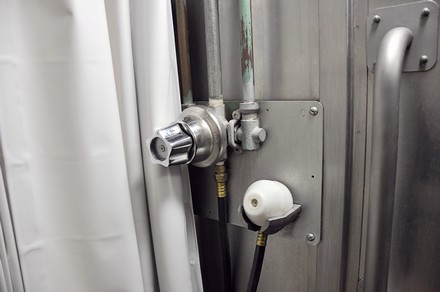
Shower user interface on an aircraft carrier. Not bad.
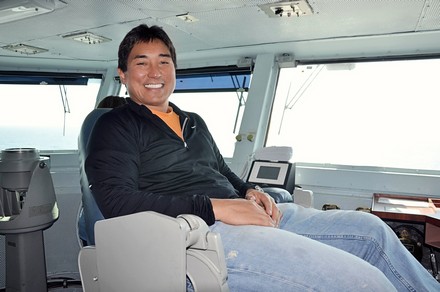
This is the Admiral Mark A. Vance’s chair. He is the commander of Carrier Strike Group Three.
This is the view you get sitting in the admiral’s chair.
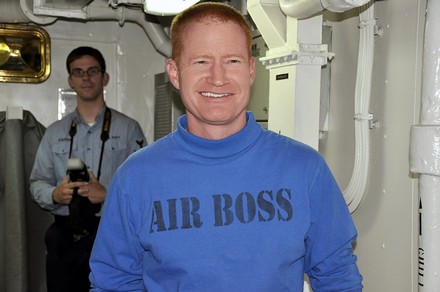
This guy runs the air operations. You’ve got to love how the Navy names positions.
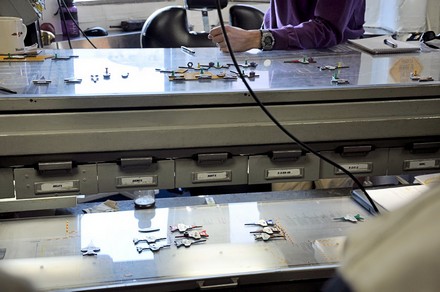
The top part of this table depicts the planes and equipment on the deck. The bottom part depicts what’s happening in the hangar below.
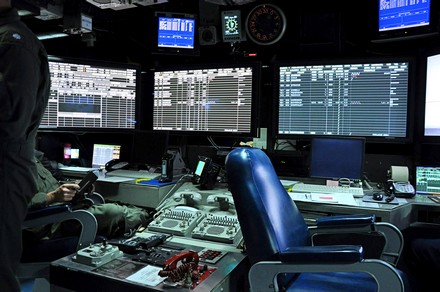
This is the carrier air traffic control center.

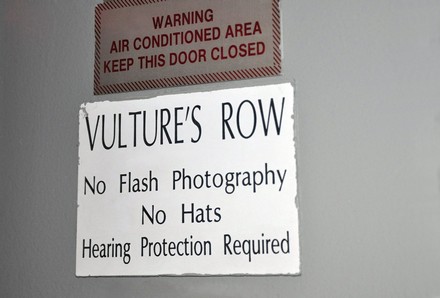
This is the sign to enter Vulture’s Row. It provides a great view of the deck.
This is what you can see from Vulture’s Row. (Shot with a Nikon D90 using a SanDisk Extreme III SD card.)
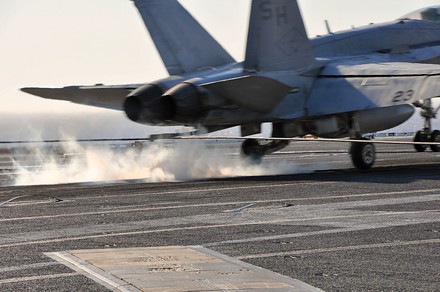
The fact that these planes can land in about 300 feet is mind boggling.
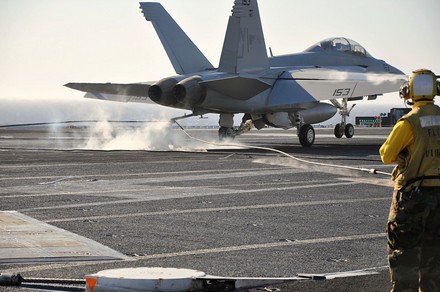
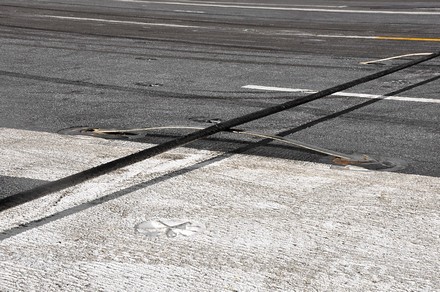
The wire is about six inches off the ground.

This will give you an idea of how big the wire is.
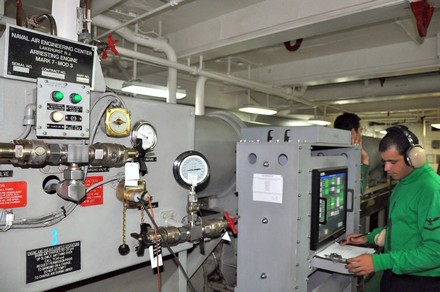
Down in the ship the wire goes to this room. Here is a teenager who is controlling the lives of pilots and $30 million airplanes. The only thing that’s more impressive than the hardware on the ship is the software–that is, the crew of young, talented, and dedicated people.
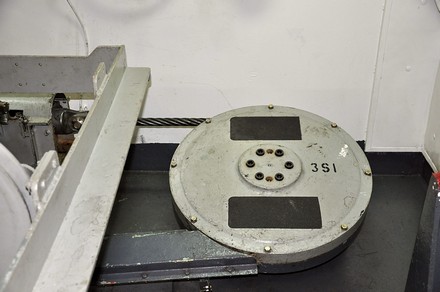
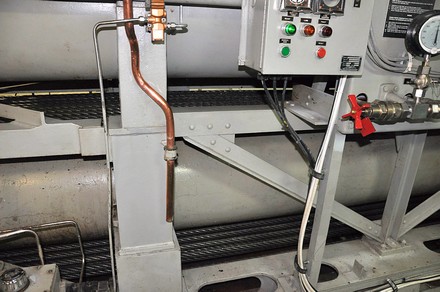
The wires go through this gizmo.
This is a video of what it’s like when a plane catches the wire. (Shot with a Nikon D90 using a SanDisk Extreme III SD card.)
This is how close you can get to a landing. Don’t try this at home. (Shot with a Nikon D90 using a SanDisk Extreme III SD card.)
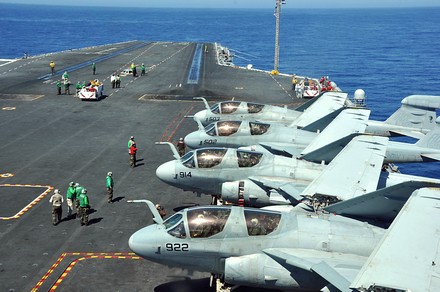

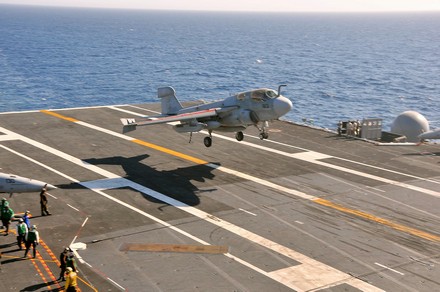
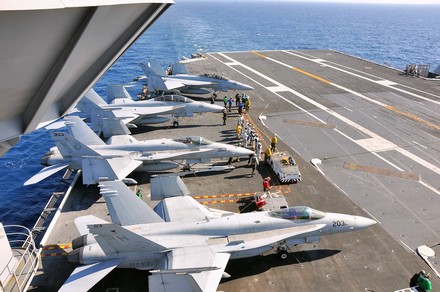
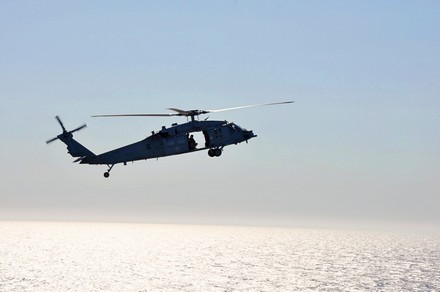
At least one helicopter circles the ship while planes are taking off and landing in case a plane goes overboard.
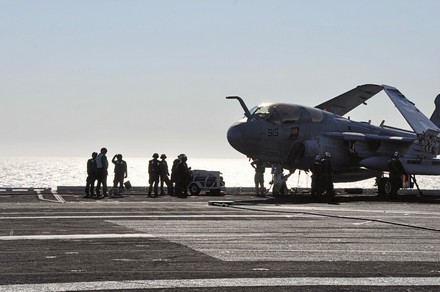
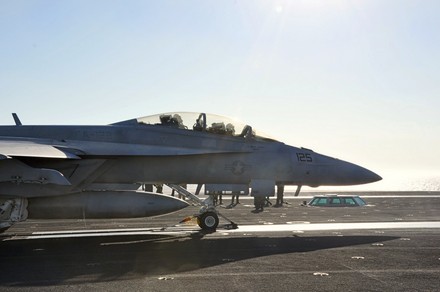
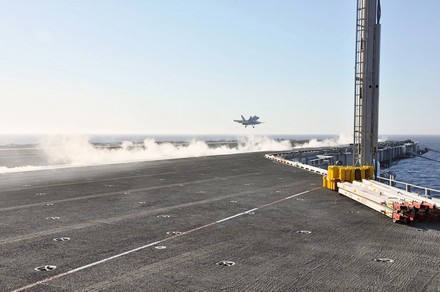
After a while, the smell of jet fuel gets mildly exciting. You definitely know that there’s action when you smell it.

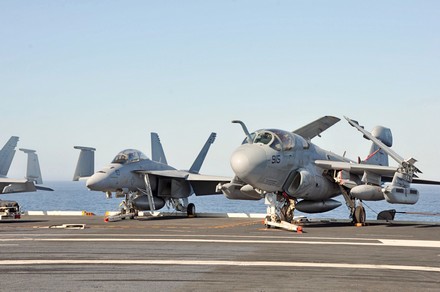
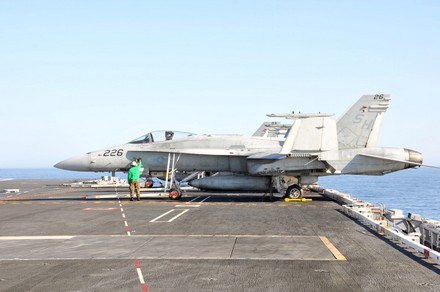

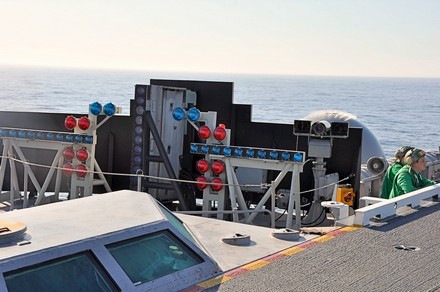
This is the “meatball.” Pilots line up with these lights to figure out if they are coming in at the right angle and height to land. Here’s an explanation of the landing process.

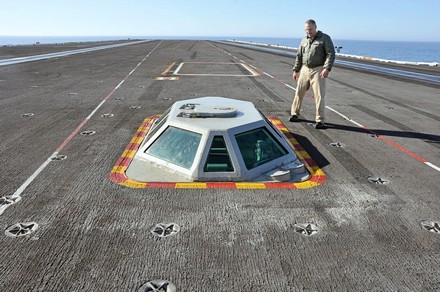
There are these little control rooms for two on the runway where “shooters” sit.
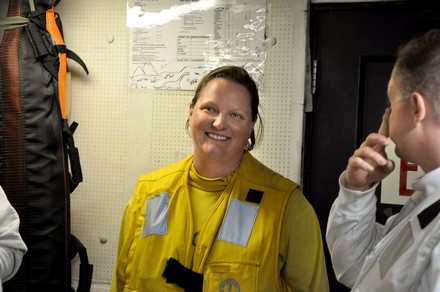
This woman is a shooter. I think shooters control how much force the catapult provides.
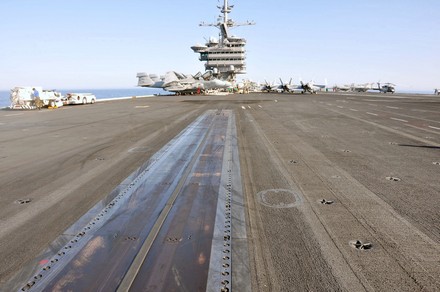

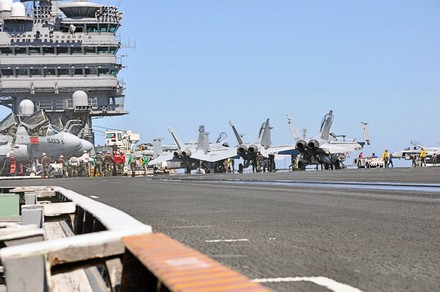

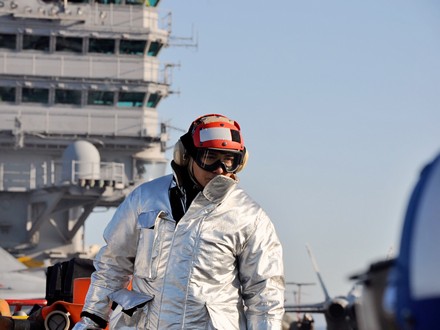
This is a fireman.
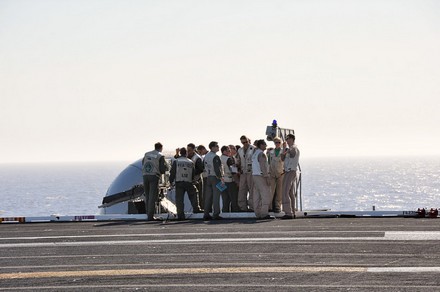
I don’t know what these folks were doing–perhaps some kind of management offsite.
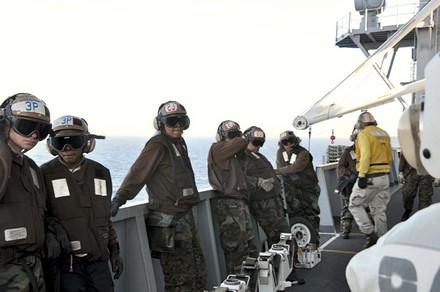
Brown shirts means they are plane captains. That is, they are responsible for individual aircraft.
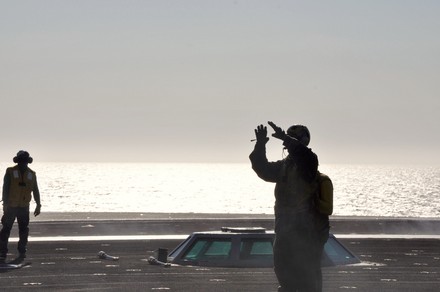
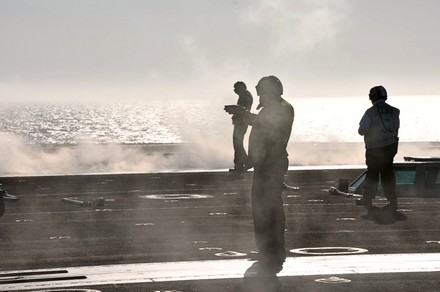
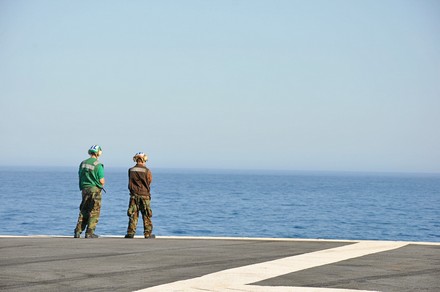
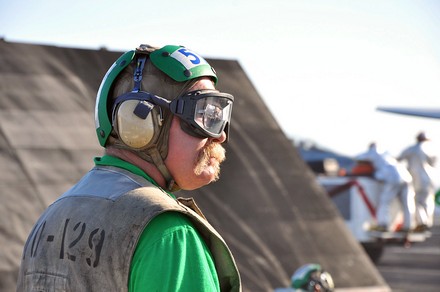
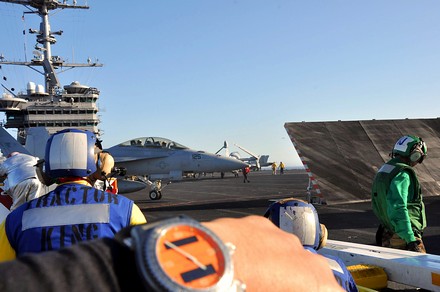
This is a picture of my Breitling Emergency watch. I took this picture because Breitling watches are made for pilots, so I thought my buddies at Breitling USA would enjoy it.
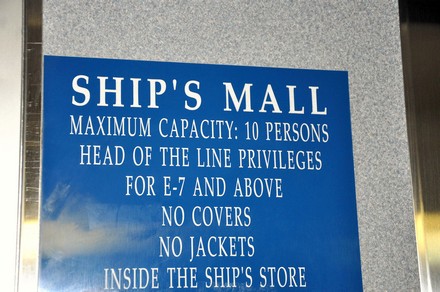
The ship has a mall on it.
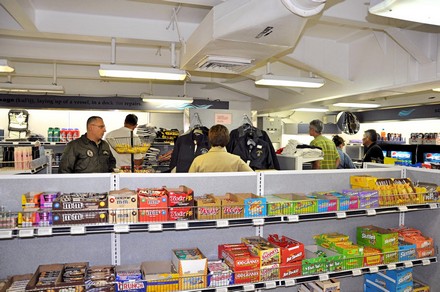
Where you can buy stuff like this.
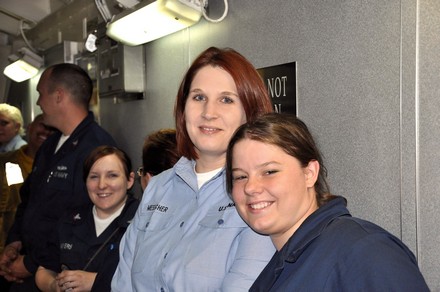
Only ten people are allowed in the store so these folks had to wait outside.
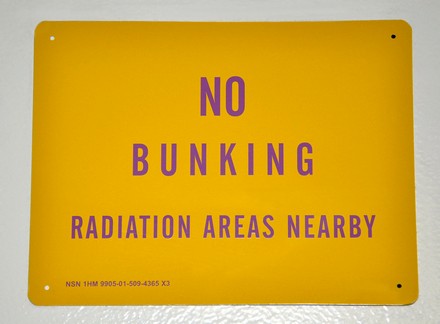
You don’t see signs like this very often in hotels.
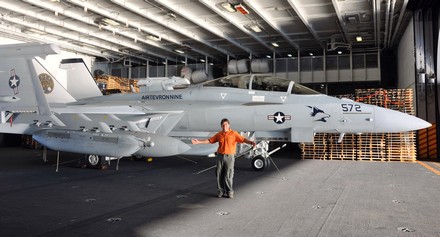
This is the coolest plane I’ve ever seen: EA-18G Growler.
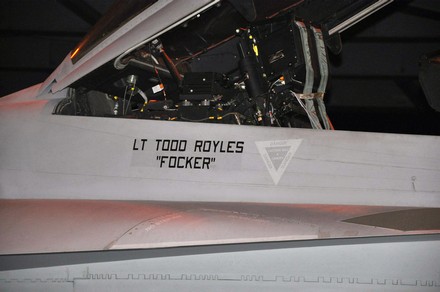
You’ve got to love the call signs. I was told that call signs like “Maverick” and “Iceman” are strictly Hollywood. More likely, a pilot’s call sign is something derogatory like “Butthead.”

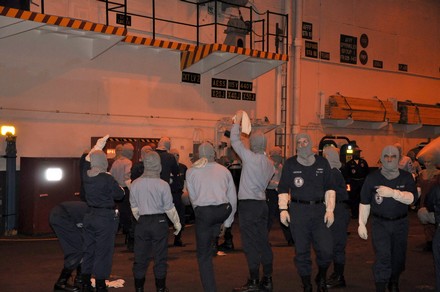
I think this is part of the emergency firefighting crew.
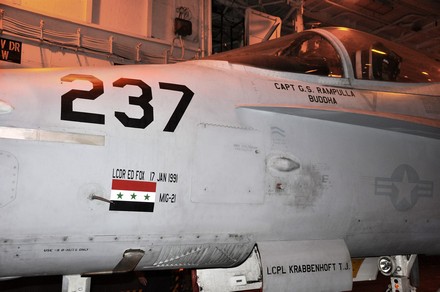
Lt. Commander Ed Fox flew this F/A-18C and shot down a MIG 21 in Iraq in 1991.
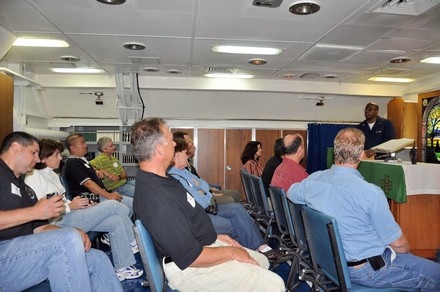
This is the ship’s chapel.
This is the very articulate Chaplain LT Martie Johnson, Jr. Listen as he explains the difference between a chaplain and a chaplain assistant. (Shot with a Nikon D90 using a SanDisk Extreme III SD card.)
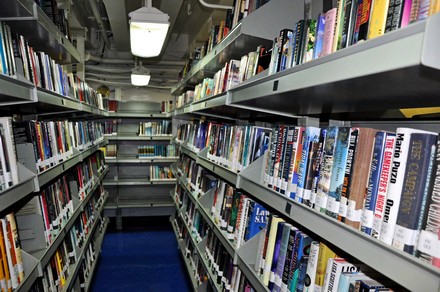
This is the ship’s library.
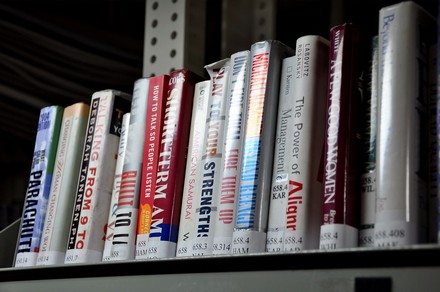
This is where my books should have been. Perhaps people had borrowed them all.
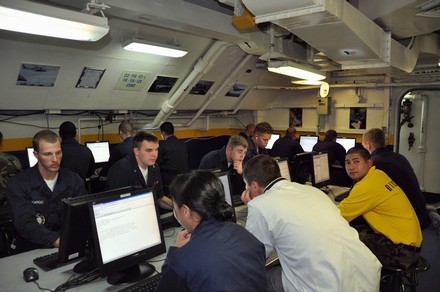
This is an Internet café. Performance seemed to be in the 500K/second range.
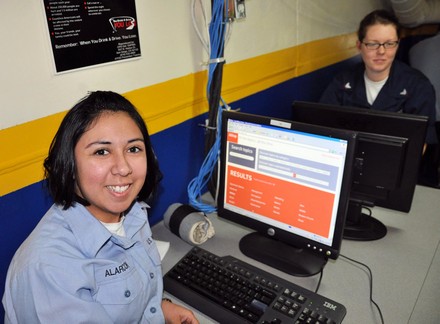
Of course, I showed her Alltop. An evangelist never rests.
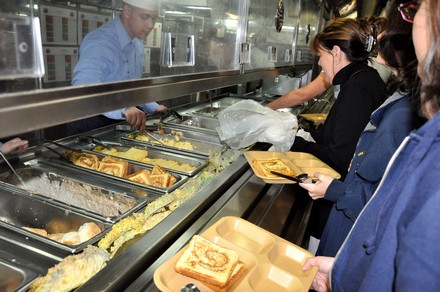
Chow!
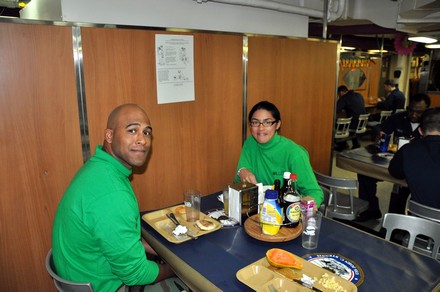
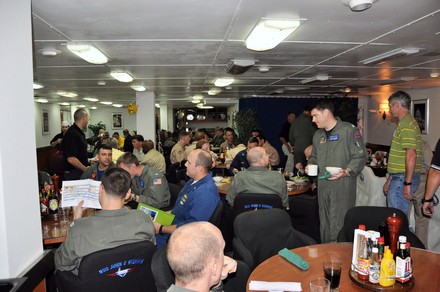

Some of the mess staff. These women were recent high-school graduates. The ship serves approximately 18,600 meals per day.
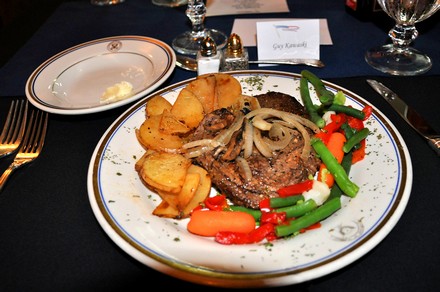
The food was far better than I expected.
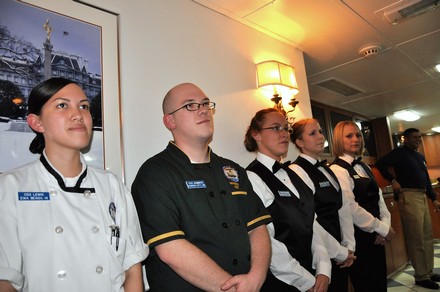
More folks from the mess staff. The chef on the left is from Hawaii.
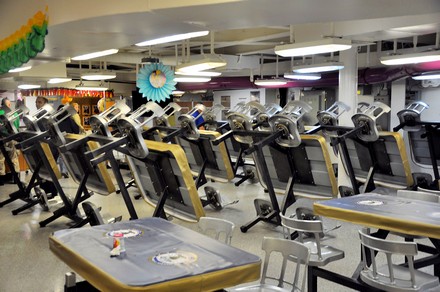
Even the tables stand at attention.
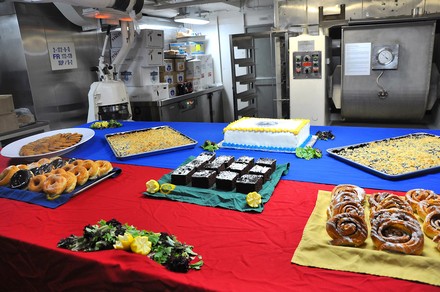
This is the ship’s bakery.
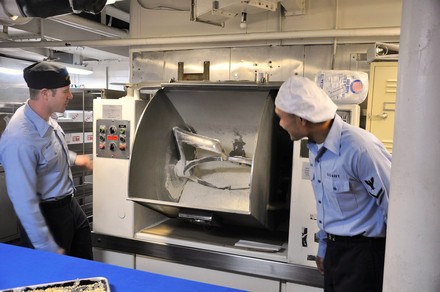
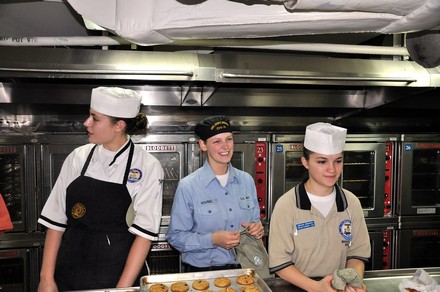
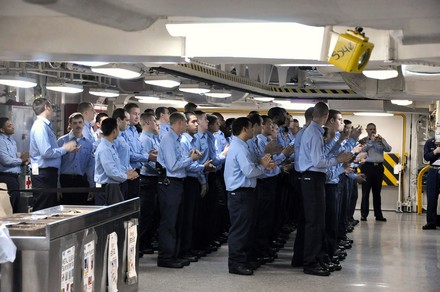
This was some kind of meeting outside the mess area.
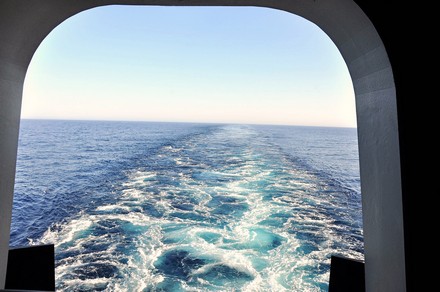
Looking out from the rear of the ship.
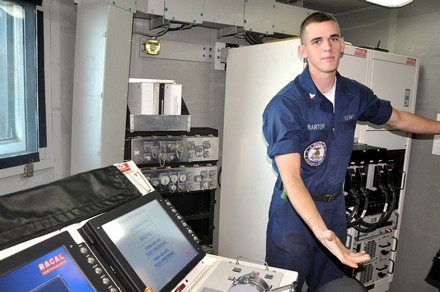
This is the control room for testing jet engines on the stern of the ship.
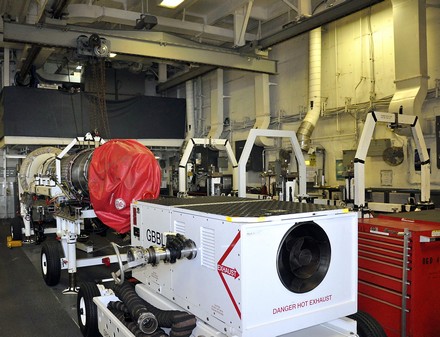
This is where the engines are repaired.
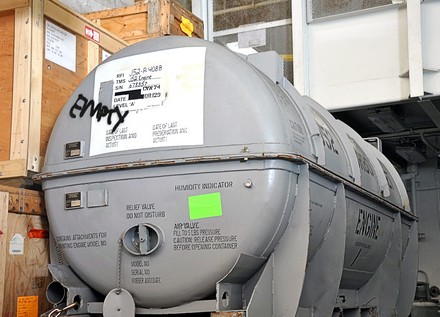
This is how a jet engine is packed. It would make a great unboxing video.
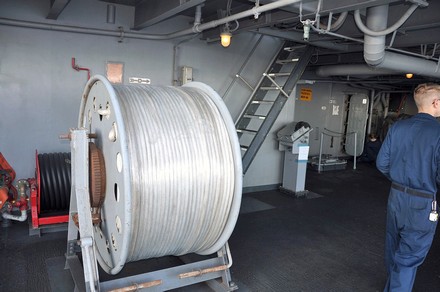
This is a spool of nylon rope that’s used to tow targets for planes to practice shooting.
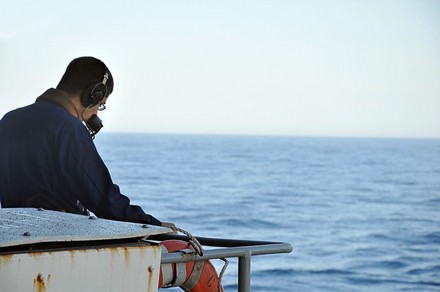
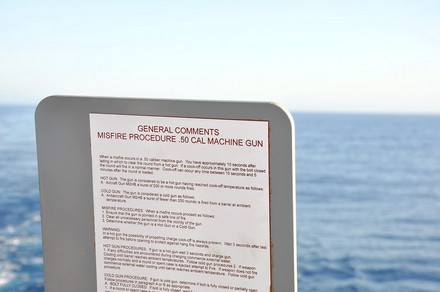
Check out this “Read me!”
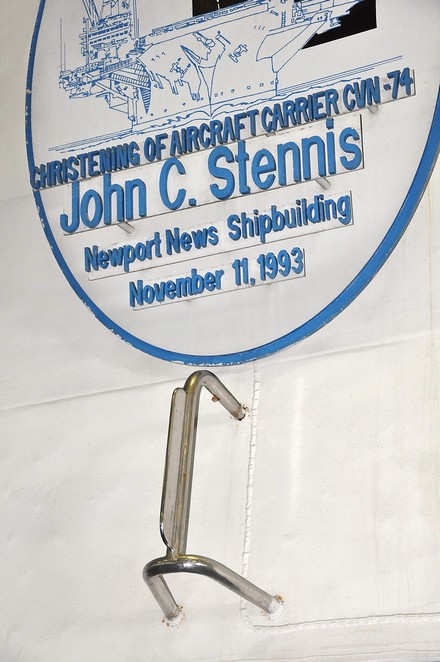
This is the original bar that the traditional bottle of champagne was broken on when the Stennis was christened.
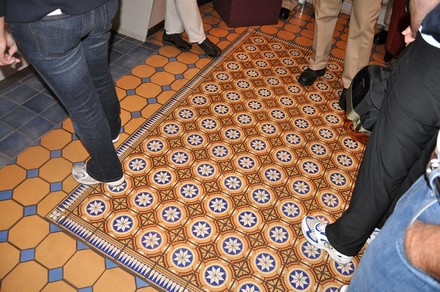
There’s a little museum that commemorates Senator John C. Stennis. These tiles are from the U.S. Senate–apparently the British gave these tiles to the U. S. after the Revolutionary War.
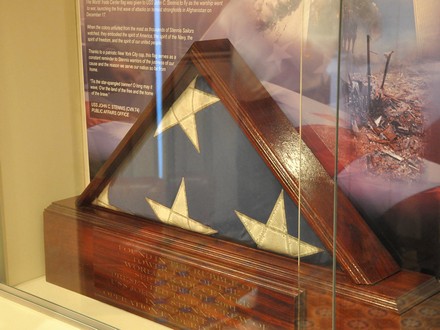
This is a U.S. flag that was found in the rubble of the World Trade Center after the 9/11 attack.
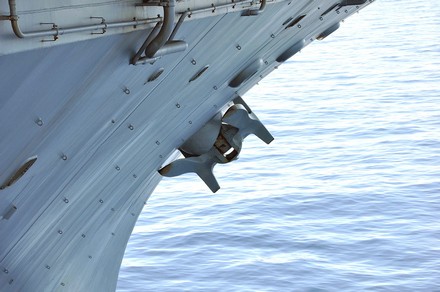
This is one end of the anchor system. The anchors weigh thirty tons each.
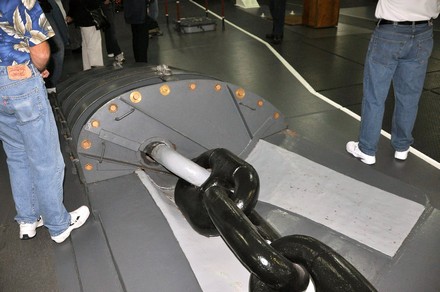
This is the other end.
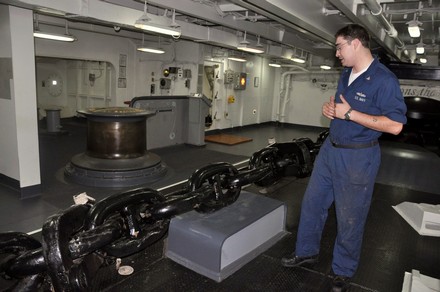
This is the middle. It is one of the cleanest rooms I’ve been in–to think that this is where the anchor chain terminates. Each link weighs 360 pounds.
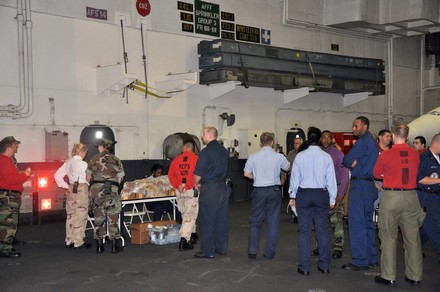
A line for random drug testing. Everyone gets tested for drugs from the captain right on down.
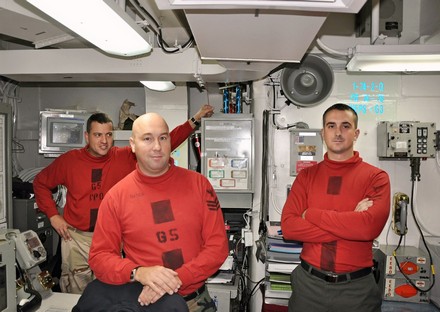
These guys manage the ammunition on the ship where ammunition is defined as bombs, missiles, and bullets.
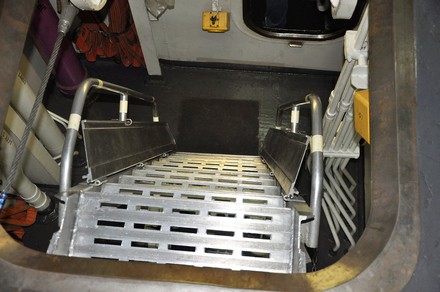
To get to an ammo room, you go down these steep stairs.
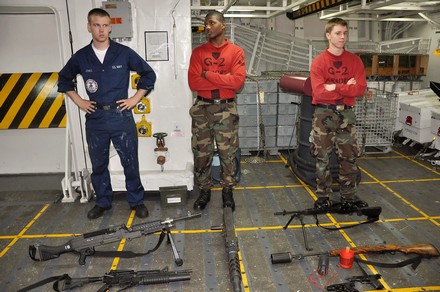
And you enter a room full of “hardware.”

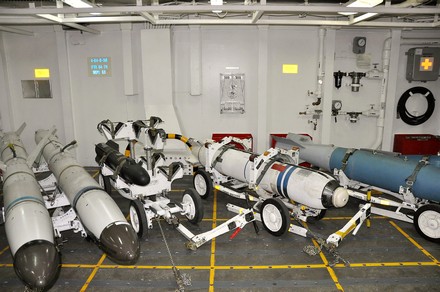

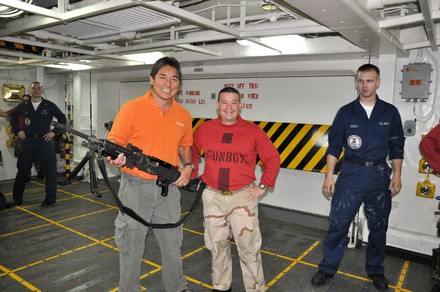
The guy on the right is the “Gun Boss” of the ship. The guy on the left with the M60 is not Jackie Chan.

You might wonder how the ammo is moved around the ship. The crew uses these elevators.
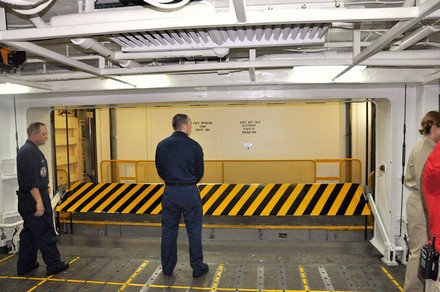
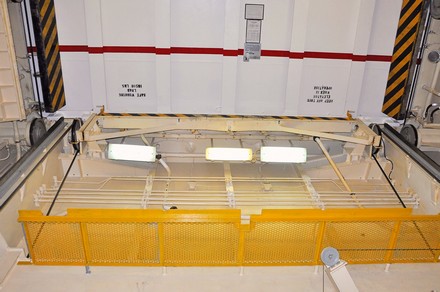
This is inside the elevator looking up.
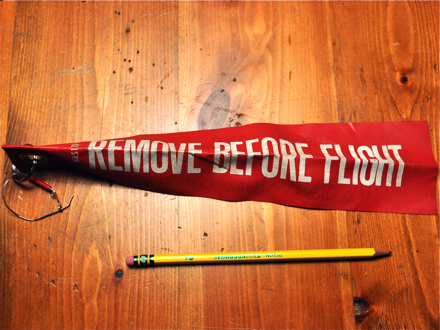
The ammo team gave us a very unusual souvenir: the tags from bombs and missiles that are removed just prior to take off. The back of mine says, “West Pac 2007 Weapons G3 USS John C. Stennis CVN-74,” which means a plane dropped the weapon on Afghanistan.
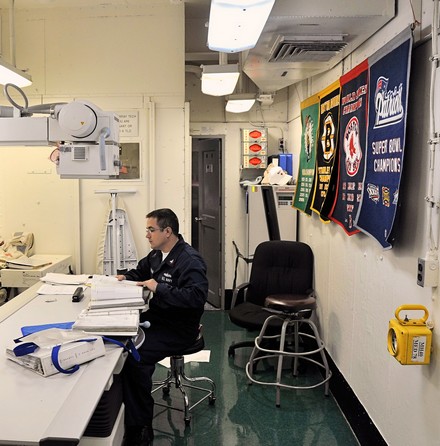
This is the X-ray room of the ship’s hospital.
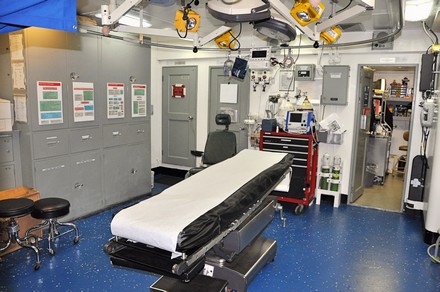
One of the treatment rooms.

Inside the ward. Note that the space is for rehabilitation as well as sleeping.

This is the chief dental officer of the ship.
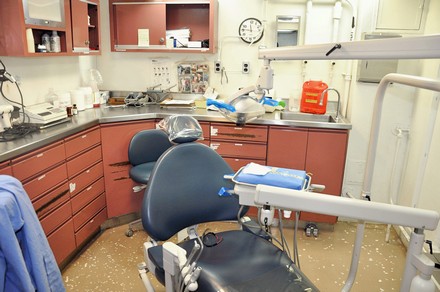
Her “practice” has seven chairs.
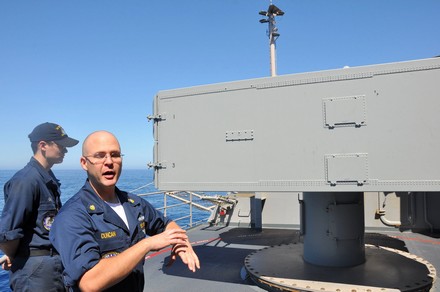
These guys run the RIM-7 sea sparrow missile system.
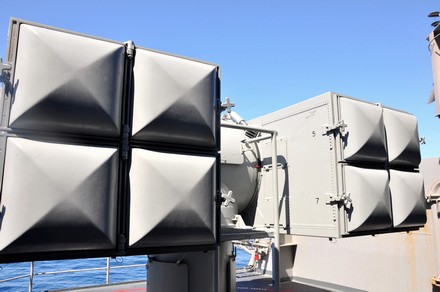
This is the back end of the system. These covers are blown off when the missiles fire.
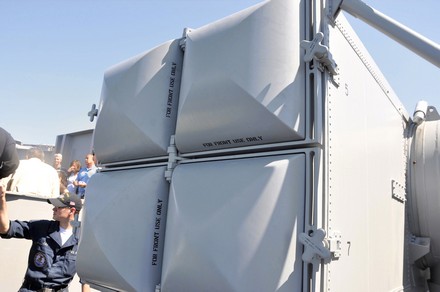
This is the front end of the system.
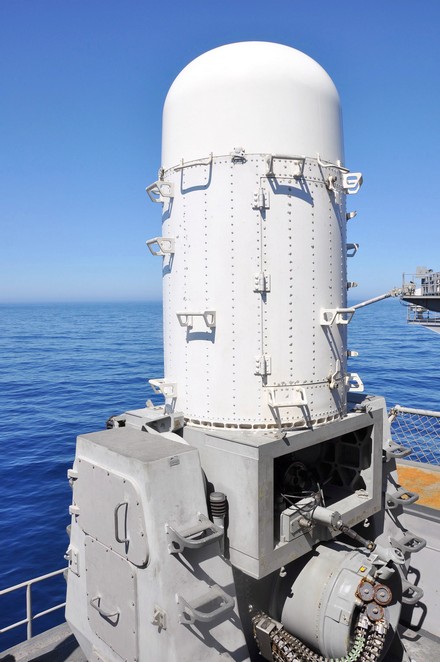
This clumsy looking thing is a Phalanx close-in weapon system. It’s used to shoot down anti-ship missiles.
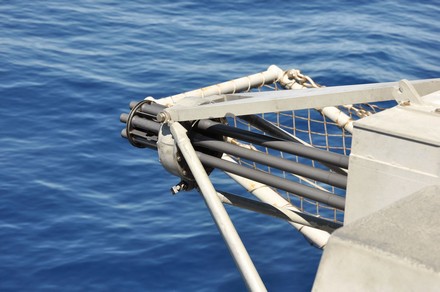
This is the business end of the gun. You never want to see it pointed at you. It can fire 4,500 twenty-millimeter rounds per minute.
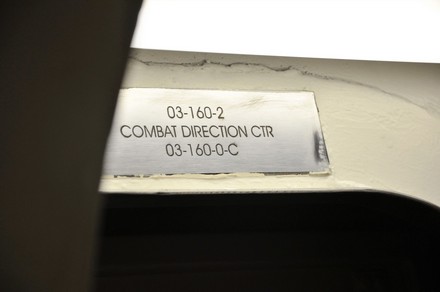
The Combat Direction Center manages combat operations for the carrier and its air wing, communication throughout the rest of the strike group, and defense of the ship.

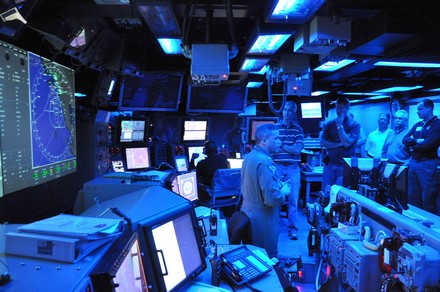
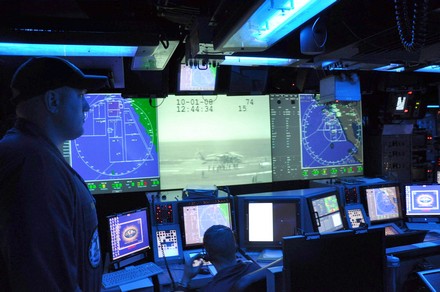
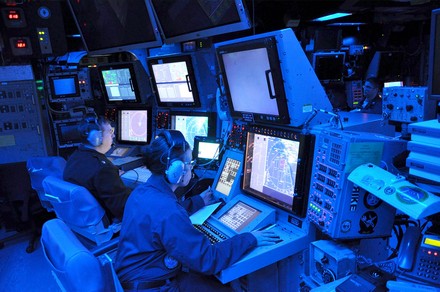

This is the ship’s captain, Joseph Kuzmick, receiving a picture sent by the Governator.
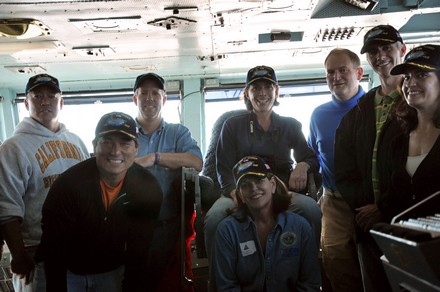
A group shot with Captain Kuzmick.
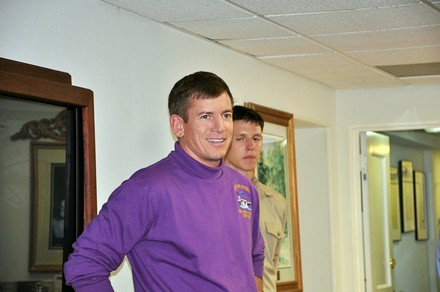
This is Commander David L. Burnham, the ship’s executive officer.
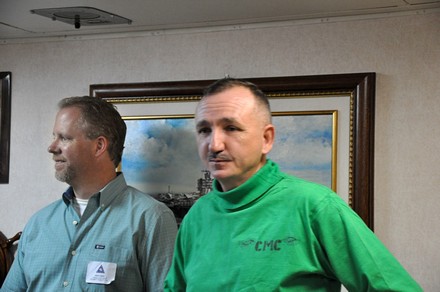
This is Command Master Chief Joseph L. Powers. This means he is the primary liaison between the officers and the enlisted sailors. This translates to “biggest bad ass on the boat.”

Our host for the visit, the ship’s public affairs officer.
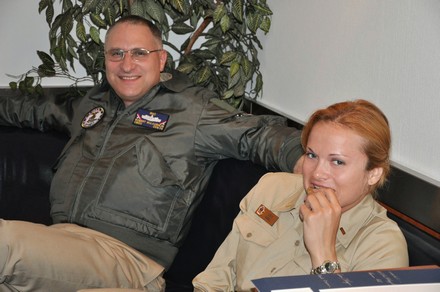
These two fun people gave us much of the tour.
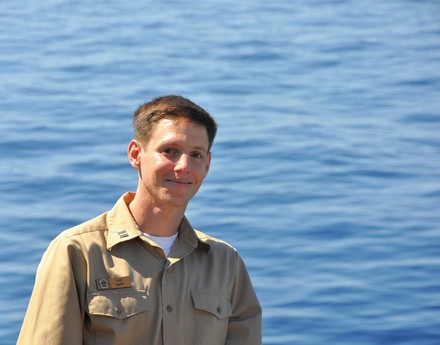
Along with this fine gentleman.
This is what it’s like to take off from the outside. (Shot with a Nikon D90 using a SanDisk Extreme III SD card.)
And this is from the inside. You don’t get nearly the sense of shock and speed of catapulting from 0 to 150 mph in two seconds from this video. Trust me, it’s a rush. (Shot with a Flip Mino)
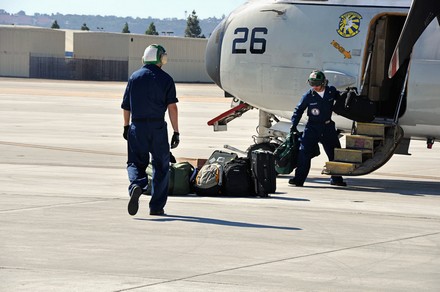
Baggage handling after we landed. “Hey sailor, there’s a Macbook Air in that bag!”

What a perfect, TopGun-esque ending: there was a Ducati parked in front of the terminal building. I would have cried if there were nothing but Priuses there.

This is Dennis Hall. He is the director of employer events for the Department of Defense committee of Northern California, Employer Support of the Guard and Reserve. He manages the program and is the person who made this adventure for me.
Thanks to the folks at Fixmyphotos for enhancing these photos. The equipment I used includes a Nikon D90, Flip Mino, and SanDisk Extreme III SD card. If you enjoyed this posting, you’ll probably love the PBS documentary called “Carrier.”



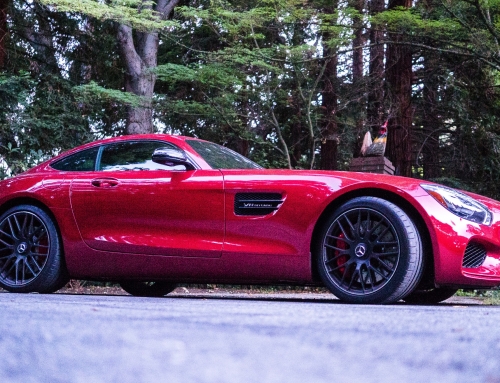
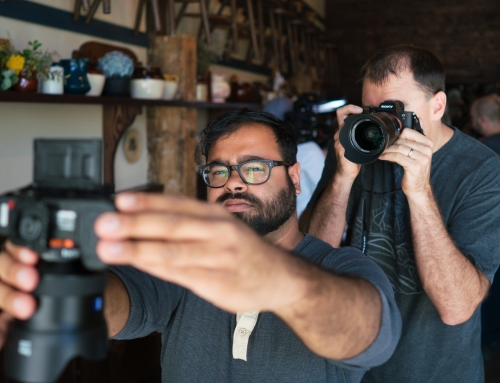


Leave a Reply